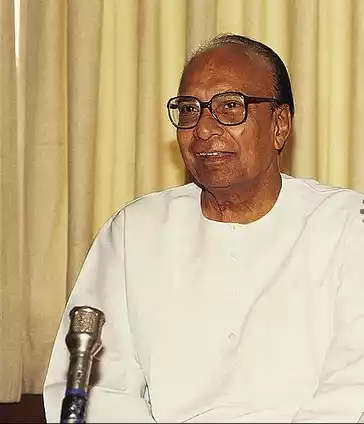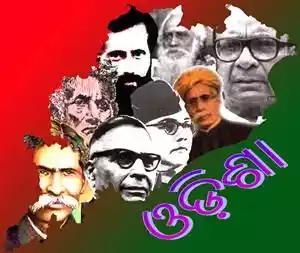Odia language
Odia, also known as Odia/Oriya, is an Eastern Indo-Aryan language primarily spoken in the Indian state of Odisha (formerly known as Orissa). It is the official language of Odisha and has a rich literary tradition dating back to the 13th century.

Odia language History
It is one of the classical languages of India and has a rich history and literary tradition. Here is a brief overview of the history of the Odia language:
Early Period: The origin of the Odia language can be traced back to the 7th century CE. The earliest known inscription in Odia called the Hati Gumpha Inscription, dates back to the reign of Emperor Kharavela of the Mahameghavahana dynasty in the 2nd century BCE. However, the script used in these early inscriptions was more Prakrit-based and evolved over time into the distinct Odia script.
Medieval Period: During the medieval period, Odia literature flourished under the patronage of the Eastern Ganga dynasty, who ruled over parts of Odisha from the 11th to the 15th century. It was during this time that the Odia language developed as a distinct literary language. The Charyapada, a collection of mystical poems written in early Odia, is one of the earliest examples of Odia literature from this period.
16th to 19th Century: The 16th century marked a significant milestone in the history of the Odia language with the emergence of the Mahima Dharma movement. The Mahima Dharma saints, led by Mahima Gosain, composed devotional songs and scriptures in Odia, popularizing the language among the masses.
During the 19th century, the Odia language experienced a resurgence with the publication of literary magazines like Utkal Deepika and newspapers such as Utkal Hiteisini. These publications played a vital role in promoting Odia literature and creating awareness about social and political issues.
Modern Period: The 20th century witnessed a remarkable growth in Odia literature, with renowned authors like Fakir Mohan Senapati, Gopabandhu Das, and Radhanath Ray making significant contributions. Fakir Mohan Senapati is often referred to as the father of modern Odia literature for his realistic novels and short stories.
Post-independence, Odia became the official language of the state of Odisha in 1954. The Odisha Sahitya Akademi, established in 1954, has played a crucial role in promoting Odia language and literature. Odia has been recognized as one of the classical languages of India by the Government of India in 2014.
Today, Odia is spoken by millions of people in Odisha and has a rich literary tradition comprising poetry, prose, plays, and novels. It continues to evolve and adapt to modern times while preserving its cultural and linguistic heritage.
Script:
Odia is written using the Odia script, which is derived from the ancient Brahmi script. The script has 64 letters, including vowels and consonants. The Odia script, also known as Odia Lipi or Utkala Lipi, is the writing system used to write the Odia language. Odia is the official language of the Indian state of Odisha and is spoken by millions of people in the region. The Odia script is an abugida, which means that the consonant and vowel sounds are combined to form syllables. Here is an overview of the Odia script:
Letters:
The Odia script consists of 52 basic letters known as “Aksharas.” These letters represent various consonant and vowel sounds. Each letter represents a syllable, which includes a consonant sound followed by a vowel sound.
Vowels ସ୍ୱର ବର୍ଣ୍ଣ:
The Odia script has 12 vowel letters, which are called “Swaras.” These letters represent the different vowel sounds in the Odia language.
| ଅ | ଆ | ଇ | ଈ | ଉ | ଊ |
| ଋ | ୠ | ଏ | ଐ | ଓ | ଔ |
Consonants:
The Odia script has 40 consonant letters, which are called “Vyanjanas.” Each consonant letter represents a specific consonant sound.
| କ | ଖ | ଗ | ଘ | ଙ |
| ଚ | ଛ | ଜ | ଝ | ଞ |
| ଟ | ଠ | ଡ | ଢ | ଣ |
| ତ | ଥ | ଦ | ଧ | ନ |
| ପ | ଫ | ବ | ଭ | ମ |
| ଯ | ର | ଳ | ହ | କ୍ଷ |
| ୟ | ଲ | ୱ | ଶ | ଷ |
| ସ | ଢ଼ | ଂ | ଃ | ଁ |
Matras (Diacritics):
In addition to consonant and vowel letters, the Odia script has various diacritic marks called “Matras” that are used to modify the vowel sound in a syllable. Matras are placed either above, below, or beside the consonant letter to indicate the specific vowel sound.
| ା | ି | ୀ | ୁ | ୂ | ୃ | ୄ | େ | ୈ | ୋ | ୌ |
Numerals:
The Odia script also has its own set of numerals used for writing numbers. These numerals are derived from the ancient Brahmi numerals and are still used in Odia writing.
| ୦ | ୧ | ୨ | ୩ | ୪ | ୫ | ୬ | ୭ | ୮ | ୯ |
Phonology:
The Odia language, also known as Oriya, is the official language of the Indian state of Odisha. Here is an overview of the phonology of the Odia language:
Consonants:
Odia has a relatively rich consonant inventory. It includes both voiced and voiceless consonants, as well as aspirated and unaspirated stops. The following table presents the consonant phonemes in the Odia language:
| Labial | Dental | Alveolar | Retroflex | Palatal | Velar | Glottal | |
|---|---|---|---|---|---|---|---|
| Nasal | m | n | |||||
| Plosive | p b | t d | k g | ||||
| ph bh | kh gh | ||||||
| Fricative | s | h | |||||
| Affricate | |||||||
| Approximant | r̥ r | ||||||
| Lateral Approximant | l̥ l |
Here are the phonetic sounds and pronunciation guide for the Odia language:
- k: as in “kit”
- kh: aspirated “k” sound
- g: as in “go”
- gh: aspirated “g” sound
- ch: as in “church”
- j: as in “jump”
- jh: aspirated “j” sound
- ṭ: as in “top”
- ṭh: aspirated “ṭ” sound
- ḍ: as in “dog”
- ḍh: aspirated “ḍ” sound
- t: as in “top”
- th: aspirated “t” sound
- d: as in “dog”
- dh: aspirated “d” sound
- p: as in “pat”
- ph: aspirated “p” sound
- b: as in “boy”
- bh: aspirated “b” sound
- r: as in “run”
- l: as in “lamp”
- ṛ: similar to the “r” in “run” but with a slight retroflection
- ḷ: similar to the “l” in “lamp” but with a slight retroflection
- m: as in “man”
- n: as in “net”
- ṇ: similar to the “n” in “net” but with a slight retroflection
- y: as in “yes”
- ṅ: as in “song”
- v: as in “van”
- ś: as in “shine”
- ṣ: as in “ship”
- s: as in “sit”
- h: as in “hot”
Vowels:
Odia has a relatively large vowel inventory consisting of both short and long vowels. It includes both oral and nasal vowels. The following table presents the vowel phonemes in the Odia language:
| Front | Central | Back | |
|---|---|---|---|
| High | i iː | u uː | |
| Mid | e eː | o oː | |
| Low | a aː |
Here are the phonetic sounds and pronunciation guide for the Odia language:
- a: as in “far”
- ā: as in “car”
- i: as in “it”
- ī: as in “eat”
- u: as in “put”
- ū: as in “moon”
- e: as in “bed”
- o: as in “top”
- ẹ: similar to the “e” in “bed” but with a slight nasalization
Diphthongs:
Odia also has diphthongs, which are a combination of two vowel sounds pronounced together within a single syllable. Here are some common diphthongs in Odia:
- ଅଉ (au) – This diphthong is pronounced as a combination of the vowel sounds “a” and “u.” Example: ମଉସି (mausi) meaning “aunt.”
- ଅଇ (ai) – This diphthong is pronounced as a combination of the vowel sounds “a” and “i.” Example: ଦାଇ (dai) meaning “elder brother.”
- ଅୟ (oy) – This diphthong is pronounced as a combination of the vowel sounds “a” and “oy.” Example: ସୋଯାଲ (soyala) meaning “partnership.”
- ଅଏ (ae) – This diphthong is pronounced as a combination of the vowel sounds “a” and “e.” Example: ଖେଳା (kheḷā) meaning “game.”
- ଇଉ (iu) – This diphthong is pronounced as a combination of the vowel sounds “i” and “u.” Example: ପୁଣି (puṇi) meaning “a name of a month.”
Tones:
While not represented in the script, the Odia language is tonal. Tone plays a significant role in distinguishing the meaning of certain words.
Syllable Structure:
The syllable structure in Odia typically follows a simple pattern of (C)V, where C represents a consonant and V represents a vowel. Consonant clusters are relatively rare in the language.
Literature:
Odia has a rich literary heritage with a diverse range of poetry, prose, and drama. The famous Odia poet Sarala Das is known as the “Adi Kavi” (the first poet) of Odia literature. Other renowned poets include Kabi Samrat Upendra Bhanja and Fakir Mohan Senapati.
Influence:
Odia has been influenced by other languages like Sanskrit, Bengali, and Telugu. It shares similarities with neighboring languages such as Bengali and Assamese.
Status:
Odia is recognized as one of the 22 scheduled languages of India and has official status in Odisha. It is also recognized as a minority language in neighboring states like Jharkhand, West Bengal, and Chhattisgarh.






